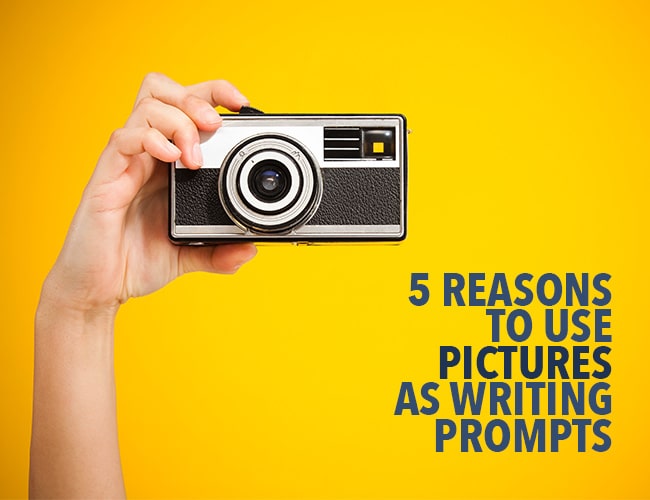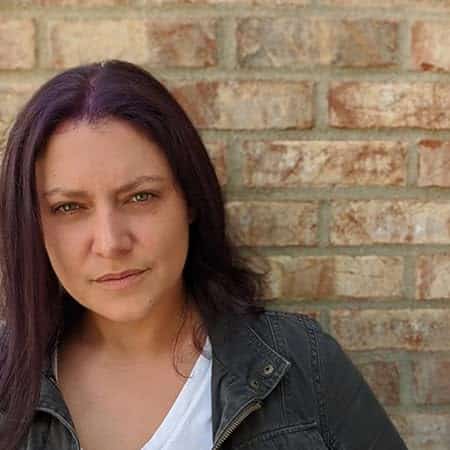Fall for me means nostalgia over back-to-school time. The idea of seeing friends, new clothes, and especially new school supplies always made me giddy. Oh, the notebooks and pens. I was in heaven.

One of my favorite assignments in elementary school was the picture writing prompts, normally in the form of a coloring book page. The goal was to think about what was happening in the scene while we were coloring. Who are these kids? What are they doing? Why are they doing it?
Then we’d write about it, normally in a timed session.
Years (I won’t say how many) after elementary school, picture writing prompts are still one of my favorite ways to get inspired and get the creative juices flowing. I use them for simple exercises, as the spark of a short story, and collect them for a general inspiration board.
5 Reasons to Dive in with Picture Writing Prompts
If you follow any kind of writing blog or social page, you’ve probably seen picture writing prompts before. People love them and there’s no end to sites that provide them. Not to mention the millions of pictures that are out there that aren’t “official” writing prompts. You’ve probably got a ton on your phone that could spark an idea.
If you haven’t taken the plunge and tried writing from picture writing prompts before, here are five reasons why you should:
1. A different take on creativity
There are a lot of reasons why teachers use pictures as prompts for their students. One is that it opens up the creative side of your brain in a different way than simply saying “Write about your summer” does. A person might write about where they went on vacation if given this verbal prompt, but if they’re looking at a picture of said vacation, they’re more likely to comment on the heat or the smell or how the sand felt between their toes.
2. Focus on details
Because the scene is already set, using pictures as prompts allows you to hone in on more sensory details than you may have done otherwise. You may look at a tree bright with crimson leaves and think of the crisp air that’s blowing down the sidewalk. Or children playing might spark the idea of sticky hands and the taste of Kool-Aid.
The placement of the picture’s actors is already set, allowing your brain to move on to the finer details of the scene, which will ultimately give your writing more authenticity and feeling.
3. Visual stimulation
Pictures are visually stimulating. You already see what is happening. You notice the colors, the action, the background. You don’t have to concentrate on imagining the scene. You simply put yourself in what’s already there and describe it.
4. Snapshots of life
Pictures convey a narrative on their own. They’re literally a snapshot of life, but just a snapshot. They don’t give context or background. They simply show you what is, and leave any interpretation up to you.
You get to decide how those people got where they are and where they’re going from there.
5. Sparks feeling/memory
Humans are very visual. We love taking pictures, looking through stranger’s pictures online, and sifting through old black-and-whites in our grandparents’ attics. Just one picture can strike a cord of feeling and memory. Look at a picture of a major event in your life and tell me you’re not transported back to that time. You know how you felt, what you did, possibly even how the room smelled or what that birthday cake tasted like.
The same can happen with pictures of other people or places you’ve never been. One good picture can capture melancholy or intense joy. By looking at someone else feeling it, you feel it. And then you can write about it.
Don’t let pictures limit you
When you’re writing based on a picture writing prompt, remember that you don’t have to conform to the picture in the literal sense. Whatever the image sparks, go with it. What comes out the other side might not have anything to do with the picture. And that’s fine! You’re using the picture as inspiration, not doing a journalistic piece on it. The sky’s the limit when using any prompt.
Want help with writing a story? Check out my complete guide to writing a short story here.
Want more writing prompts? We regularly post new writing prompts, covering a whole range of themes and topics, such as our September writing prompts and Back to School prompts. Check some out today!
Do you do better with word or picture writing prompts? Let me know in the comments!
PRACTICE
Go to a site like this one or this one or this one and choose a picture. Don’t spend a ton of time choosing one. Just pick on and go with it. Take a good look at the picture, then spend fifteen minutes writing about it.
Don’t worry if it’s not a complete story. Just free write. If you can develop it into a full story later, great! If not, it was a nice exercise to get the juices flowing!
BONUS: If you want the full elementary school experience (and to give your creative mind a different outlet) print out and color one of these sheets from Crayola. Then write about it.
Don't forget to share your writing in the Pro Practice Workshop and give your fellow writers some feedback!
Sarah Gribble is the author of dozens of short stories that explore uncomfortable situations, basic fears, and the general awe and fascination of the unknown. She just released Surviving Death, her first novel, and is currently working on her next book.
Follow her on Instagram or join her email list for free scares.




0 Comments